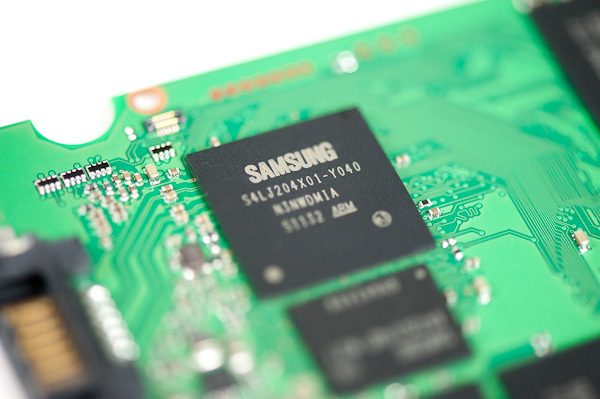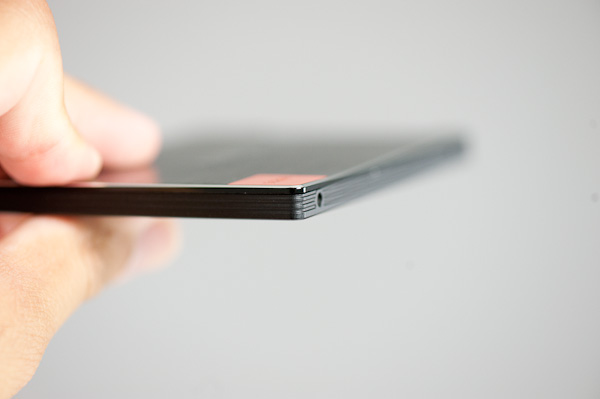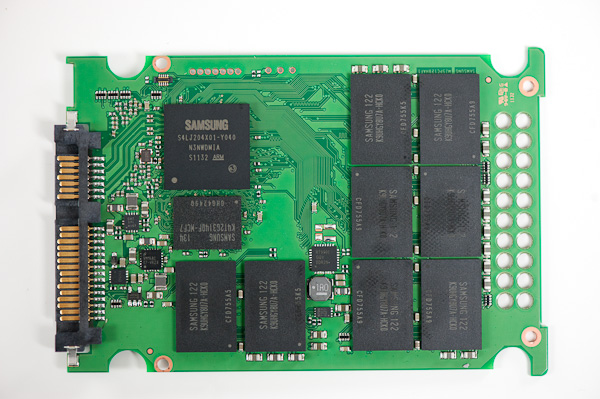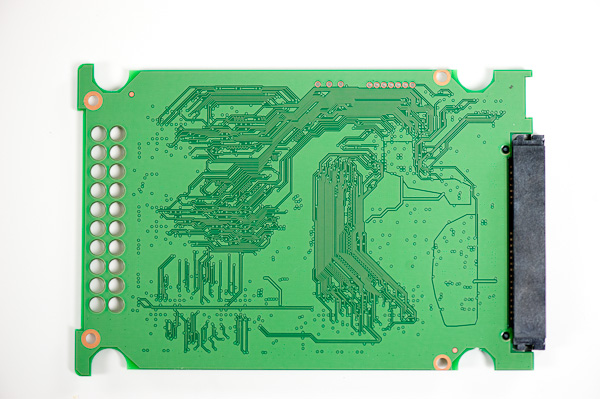The Samsung SSD 830 Review
by Anand Lal Shimpi on September 24, 2011 1:02 AM EST- Posted in
- SSDs
- Storage
- Samsung
- pm830
- Samsung SSD 830
Samsung is a dangerous competitor in the SSD space. Not only does it make its own controller, DRAM and NAND, but it also has an incredible track record in terms of reliability. Samsung SSDs were among the first I reviewed and while they weren't anywhere near the fastest back then, every last one of those drives is still working without issue in my lab today. It's also worth pointing out that Samsung SSDs are also one of the two options Apple rebrands and delivers in its Mac lineup. To continue to hold on to Apple's business for this long is an impressive feat on Samsung's part.
In the early days Samsung actually sold reference designs to companies like Corsair and OCZ. Its partners could then rebrand and resell the drives, which they did. Samsung was still learning the market and after being overshadowed by Indilinx in the performance segment, Samsung retreated. Returning last year to the consumer market Samsung had a new strategy in mind: go directly after the channel. Seeing no point in reselling its designs to third parties, Samsung made its SSD 470 available to both OEMs and consumers alike. OEMs were free to obscure the Samsung name but consumers were told upfront what they were getting. Samsung even spent a good amount on packaging for their drive just to develop its brand.
Although the 470 was a downright decent 3Gbps drive, it was competing in a world dominated by 6Gbps alternatives. Crucial's m4, Intel's SSD 510 and OCZ's Vertex 3 all offered better performance, at a similar price point. The only leg Samsung had to stand on was reliability, which believe it or not can sometimes take second place to performance depending on the target market. What Samsung needed was a faster drive that didn't sacrifice reliability and didn't move price points up. That's exactly what the Samsung SSD 830 is designed to do.
As we've already mentioned, the 830 is an evolution of the 470 design. It still employs a page-mapped architecture to deliver high random and sequential performance, but as a result requires quite a bit of on-board memory. Samsung has no qualms about storing user data in DRAM temporarily so it outfits the SSD 830 with a massive 256MB DDR2 cache. While this cache was spread over two chips in the 470, it is contained in a single package in the 830.
On the interface side Samsung gave the 830 a much needed upgrade to 6Gbps SATA. With a higher speed interface to the host controller and some tweaks on the firmware side Samsung is able to deliver much higher performance than the outgoing 470. Samsung manufactures and uses its own 2x-nm Toggle-mode DDR NAND which is fairly similar in performance to the ONFi 2.x NAND used by Intel and Crucial (133Mbps data rates per interface).
Little is known about the 830's controller other than it is a multi-core ARM design. Samsung claims the controller has three cores however we don't have any information on the design of each core nor the type of work each one does. As SandForce has claimed in the past, SSDs are rarely limited by processing power. Instead it's the firmware, algorithms and internal chip memories that ultimately determine performance. Samsung has claimed in the past its multi-core design yields better performance under multitasking workloads but I'm guessing that's more marketing than substantive.
The enterprise version of the 830 enables full-disk encryption (AES-256) however Samsung's product literature doesn't clarify whether or not the same is true for the consumer version.
The Drive
The SSD 830 is the consumer version of Samsung's recently announced PM830. The two drives use identical hardware but they do differ in initial firmware revisions. Samsung will provide firmware updates (Windows only) via its Magician Software. Users are also able to configure the amount of spare area on the drive using the Magician toolbox. By default spare area is set at a standard ~7% (just what you get from the GB to GiB conversion), putting the 830 on par with Intel and Crucial in that regard.
The Samsung SSD 830 will be available to consumers starting in mid October. Although Samsung isn't announcing pricing at this time, I've been told to expect the drive to be priced around where the SSD 470 is today. I popped over to Newegg to do a quick price check on the 470 and came away relatively pleased:
| Newegg Price Comparison | |||||
| 256GB | 128GB | 64GB | |||
| Samsung SSD 470 | $384.99 | $214.99 | $114.99 | ||
| Crucial m4 | $379.99 | $196.99 | $94.99 | ||
| Intel SSD 510 | $569.49 | $279.99 | |||
| OCZ Vertex 3 | $439.99 | $209.99 | $134.99 | ||
For the most part the SSD 470 is priced competitively with the Crucial m4 and OCZ Vertex 3. Crucial is a bit cheaper across the board but the gap is at most $20. If Samsung can keep its 830 pricing on par with where the 470 is today, I'll have absolutely no complaints.
The 830 will be available in four capacities, each of which will be available in three different versions: bare drive, laptop installation kit and desktop installation kit. The bare drive will be the cheapest option while the laptop kit gives you Norton Ghost + a SATA to USB cable and the desktop kit gives you Norton Ghost + a 2.5" to 3.5" adapter (with SATA cable).
| Samsung SSD 830 Lineup | |||||||
| 512GB | 256GB | 128GB | 64GB | ||||
| NAND Type | 2x-nm Toggle MLC | 2x-nm Toggle MLC | 2x-nm Toggle MLC | 2x-nm Toggle MLC | |||
| NAND | 512GB | 256GB | 128GB | 64GB | |||
| User Capacity | 476GiB | 238GiB | 119GiB | 59GiB | |||
| Random Read Performance | Up to 80K IOPS | Up to 80K IOPS | Up to 80K IOPS | Up to 75K IOPS | |||
| Random Write Performance | Up to 36K IOPS | Up to 36K IOPS | Up to 30K IOPS | Up to 16K IOPS | |||
| Sequential Read Performance | Up to 520 MB/s | Up to 520 MB/s | Up to 520 MB/s | Up to 520 MB/s | |||
| Sequential Write Performance | Up to 400 MB/s | Up to 400 MB/s | Up to 320 MB/s | Up to 160 MB/s | |||
Samsung sent us a 512GB drive, however as you can see from the table above the performance should be identical to the 256GB version. We are trying to get our hands on lower capacity versions as well to see how they perform.
The 830 is a very pretty drive, something Samsung is quite proud of. The 7mm chassis is all plastic save for the aluminum top plate. The bare drive doesn't ship with an adaptor for 9.5mm bays. If your notebook requires a 9.5mm drive you'll need a carrier of some sort to make the drive fit. There are no screws on the 830, the top plate just snaps on/off:
Inside the 512GB drive are only 8 NAND packages occupying one side of the PCB. These are octal-die packages with 64GB of total NAND per package. Each die is obviously 8GB in capacity.
The Test
| CPU |
Intel Core i7 2600K running at 3.4GHz (Turbo & EIST Disabled) - for AT SB 2011, AS SSD & ATTO |
| Motherboard: |
Intel DH67BL Motherboard |
| Chipset: |
Intel H67 |
| Chipset Drivers: |
Intel 9.1.1.1015 + Intel RST 10.2 |
| Memory: | Corsair Vengeance DDR3-1333 2 x 2GB (7-7-7-20) |
| Video Card: | eVGA GeForce GTX 285 |
| Video Drivers: | NVIDIA ForceWare 190.38 64-bit |
| Desktop Resolution: | 1920 x 1200 |
| OS: | Windows 7 x64 |















99 Comments
View All Comments
name99 - Saturday, September 24, 2011 - link
5.8W maximum power draw! Ouch.Let's note, for the record, that that means it simply won't work in a USB2 enclosure, and it work work in a USB3 enclosure (4.5W) without a Y-cable.
WTF causes this? If a magnetic hard drive can spin up on USB2 power (2.5W) I remain amazed that SSDs demand so much power when writing.
Jaybus - Tuesday, September 27, 2011 - link
The same thing that causes every transistor based device to consume power, resistivity and capacitance of the materials through which current flows. Resistance produces a loss of energy in the form of heat. Capacitance limits the rise time of the transistors, causing the duty cycle to increase as a function of frequency.Obsoleet - Thursday, January 19, 2012 - link
It's the multichannel read/writes. Takes a ton of energy even vs spinning up a portable drive like my WD Passport USB3.0 1TB.Idontcare - Saturday, September 24, 2011 - link
Loved the video too!I appreciated you candidly sharing your thoughts regarding the two schools of thought on garbage collections (real-time on-the-fly versus delayed-till-idle) :)
Brought to mind the spindle-days of setting up defrag to run during idle times versus real-time defragging that came out right before we stopped needing to defrag altogether :P
ClagMaster - Sunday, September 25, 2011 - link
For most enthusiasts obscessed with performance with money to burn, they seem to care mostly about either bandwidth or cost. They upgrade frequently and seem not to care about longterm value.For the vast majority of mainstream users, who use there computers for creating products and services of lasting (and repeatable) value, ... in short long term value. Mainstream users care the most about reliability, good support, good performance, capacity and then cost.
Thank you for your qualitative comments about the reliability of the SSDs from Samsung (and their rebranders) and its good reputation with Apple and other OEMs for their reliability. I care much more about reliability than I do some of the mind-numbing comparisons that are shown of bandwidth differences spanning about 15% from good to poor. I would rather take a 15% hit in performance from the latest and greatest Vertex III and enjoy 5 years of trouble free operation.
The two most reliable brands of SSD out there is Intel and Samsung according to Anand. Although Intel is more pricy, they offer better firmware and utility support. Like their branded motherboards (which enthusiasts mock for their conventionality but respect for their reliability), I believe Intel does active testing of their SSD's for reliability and longetivity and provides firmware support to make sure that happens. All of its other competitors do not. That is why I now have a 120 GB 510 Series on my PC.
Clearly Samsung and Intel SSD are going to be the choice for business applications.
Fun Guy - Monday, September 26, 2011 - link
"According to Anand...." Is Anand God?Nothing against the guy, but he's just a guy, and he earns money off of this site. No telling how that sways his views (consciously, or unconsciously).
I'll take the aggregate reviews over at New Egg, over any single website operator any day of the week.
JarredWalton - Monday, September 26, 2011 - link
I'd personally take Google and other aggregations of data over Newegg reviews.Jaybus - Tuesday, September 27, 2011 - link
I wouldn't. Disgruntled consumers are far more likely to review than satisfied consumers. Also, NewEgg doesn't post how many items have been sold. It is impossible to determine whether the number of one egg reviews is statistically relevant without knowing how many were purchased.tzhu07 - Friday, December 2, 2011 - link
Yup, this is true. Not to mention the tons of people at Newegg that 1-star products over issues that don't have anything to do with the product itself. For example, not getting rebates.ClagMaster - Wednesday, September 28, 2011 - link
Anand is not God.Anand is an IT professional who operates a hardware review site that I enjoy patronizing for nearly 10 years.
I respect Anand's opinions. And yes, there are some instances where I felt his opinions might have been swayed. But overall, his opinions have stood the tests of time.
I simply appreaciate Anands comments on reliability -- singling out Intel and Samsung drives for a good reputation for reliability and support (Intel).
I think Intel works very hard making sure their motherboards, peripherals and SSD's are reliabile. Intel has a facility in Oregon where they extensively test their motherboards. I am impressed because no other motherboard vendor does this.